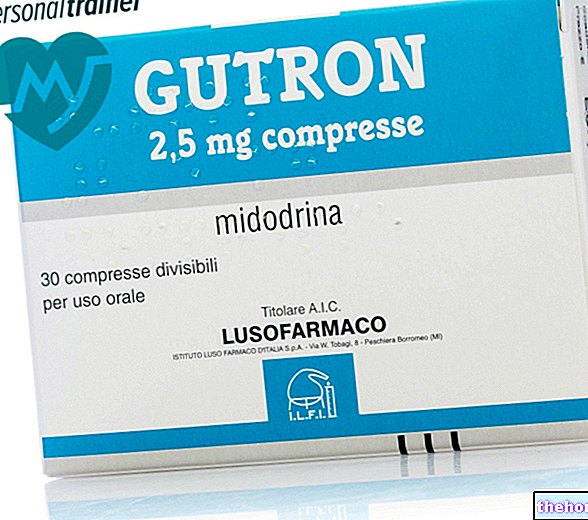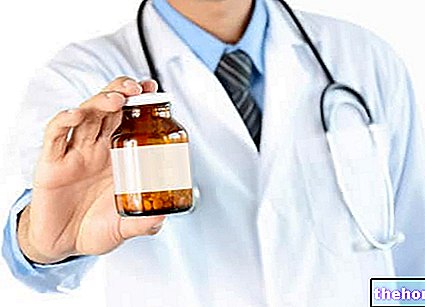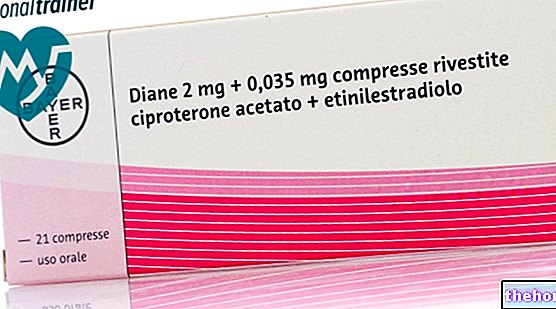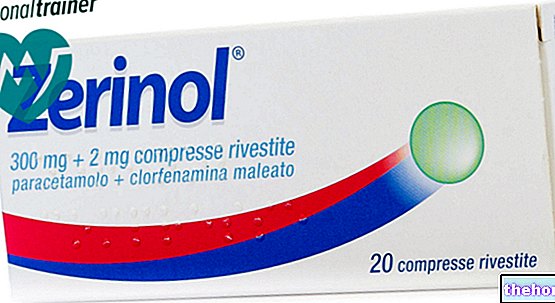Active ingredients: Cefachlor
Cefachlor ABC 500 mg hard capsules
Cefachlor ABC 250 mg / 5 ml granules for oral suspension
Why is Cefaclor used? What is it for?
Cefachlor ABC contains the active substance cefachlor which belongs to a group of medicines called cephalosporins. Cephalosporins are antibiotics and are used to treat infections caused by bacteria.
Cefachlor ABC is indicated for the treatment of the following infections:
- infections of the respiratory tract, lungs (pneumonia), bronchi (bronchitis, including exacerbations of chronic bronchitis), throat (pharyngitis), tonsils (tonsillitis);
- ear infections (otitis media);
- infections of the skin and soft tissues;
- urinary tract infections including those of the kidneys (pyelonephritis), bladder (cystitis) and those of the urethra caused by a bacterium called gonococcus (gonococcal urethritis);
- infections of the nasal passages (sinusitis).
Contraindications When Cefaclor should not be used
Do not take Cefachlor ABC
- if you are allergic to cefachlor, other similar antibiotics (cephalosporins) or any of the other ingredients of this medicine (listed in section 6);
Precautions for use What you need to know before taking Cefaclor
Talk to your doctor or pharmacist before taking Cefachlor ABC.
Tell your doctor if you or someone in your family has suffered from allergic-type problems after taking cefachlor or other similar medicines (cephalosporins, penicillins), as you may have an allergic reaction taking this medicine.
Prolonged use of cefacloro can induce the development of non-sensitive germs.
If you experience symptoms of an allergic reaction you should stop taking this medicine and contact a doctor immediately.
Symptoms of an allergic reaction can include:
- severe and sudden decrease in blood pressure (hypotension);
- acceleration and slowing of heartbeats;
- unusual feeling of tiredness or weakness;
- anxiety, agitation;
- vertigo;
- fainting (loss of consciousness);
- difficulty breathing or swallowing;
- generalized itching especially in the hands and feet;
- skin irritations (hives) with or without swelling of the extremities, external genitals, face especially in the eye and lip region (angioedema);
- redness of the skin especially around the ears;
- bluish discoloration of the skin (cyanosis);
- sweating.
Tell your doctor if:
- you have episodes of diarrhea during treatment with this medicine, as this may indicate the appearance of a bowel problem (pseudomembranous colitis); tell your doctor if you have suffered from intestinal disorders in the past as you are more likely to experience this type of intestinal disorder associated with antibiotics;
- suffer from kidney problems as your doctor may need to reduce your dose;
- you must have blood or urine tests, as it is possible that these tests may give erroneous results.
Interactions Which drugs or foods can modify the effect of Cefaclor
Tell your doctor or pharmacist if you are using, have recently used or might use any other medicines.
Tell your doctor if you are taking a medicine called probenecid (used to treat gout), as your doctor may need to change your dose.
Warnings It is important to know that:
Pregnancy and breastfeeding
If you are pregnant, think you may be pregnant or are planning to have a baby, or if you are breast-feeding, ask your doctor or pharmacist for advice before taking this medicine.
Do not take Cefacloro ABC if you are pregnant or breast-feeding, except in cases of real need and under the direct supervision of your doctor.
Driving and using machines
This medicine does not affect the ability to drive and use machines.
Cefacloro ABC 250 mg / 5 ml granules for oral suspension contains sucrose
This medicine contains sucrose, a type of sugar. If you have been told by your doctor that you have "intolerance to some sugars, contact your doctor before taking this medicinal product.
Dose, Method and Time of Administration How to use Cefaclor: Posology
Always take this medicine exactly as your doctor or pharmacist has told you. If in doubt, consult your doctor or pharmacist.
Use in adults
The recommended dose is 250 mg (5 ml) every 8 hours.
In more severe infections, higher doses may be needed. The maximum recommended dose is 2 g per day.
For the treatment of acute gonococcal urethritis, the recommended dose is 3 g in a single administration; in this case, your doctor may also prescribe another medicine called probenecid to be taken in combination with Cefacloro ABC.
Use in children
The recommended total daily dose is 20 mg per kilo of body weight.
This dose should be divided into 3 administrations, one every 8 hours.
In more severe infections (such as otitis media), the recommended total daily dose is 40 mg per pound of body weight The maximum recommended dose is 1 g per day.
In both children and adults, in the treatment of otitis media and pharyngitis, the total daily dose can be divided into doses to be taken every 12 hours.
Instructions for preparing the suspension
To prepare the suspension follow the following procedure:
- shake the bottle well before preparation;
- fill about half of the bottle with water;
- shake vigorously for about 1 minute until a homogeneous suspension is obtained;
- add more water until the level indicated on the bottle is reached;
- shake well until a uniform suspension is obtained.
When prepared according to these instructions, 5 ml of suspension contains 250 mg of cephachlor.
Shake well before each use.
If you forget to take Cefachlor ABC
Do not take a double dose to make up for a forgotten dose.
If you have any further questions on the use of this medicine, ask your doctor or pharmacist.
Overdose What to do if you have taken too much Cefaclor
In the event of an overdose, the following symptoms may occur: nausea, vomiting, stomach upset and diarrhea.
In case of accidental overdose of Cefachlor ABC, notify your doctor immediately or go to the nearest hospital.
Side Effects What are the side effects of Cefaclor
Like all medicines, this medicine can cause side effects, although not everybody gets them.
The following side effects may occur:
- allergic reactions (hypersensitivity);
- stomach and intestinal disorders (gastrointestinal effects);
- allergic (hypersensitivity) reactions characterized by the presence of measles-like skin lesions (measles-like rashes);
- diarrhea;
- swelling of the face, lips, mouth, tongue or throat due to fluid accumulation (angioedema);
- increased levels of white blood cells (eosinophilia)
- itching of the genitals, infection of the vagina caused by a fungus (vaginal moniliasis), inflammation of the vagina;
- impaired liver function with increased levels of enzymes produced by the liver (SGOT, SGPT, alkaline phosphatase);
- itching, skin irritation (hives);
- alteration of the results of some blood tests (positive Coombs test);
- generalized allergic reactions (serum-like diseases), which occur mainly in children and are characterized by the presence of various lesions on the skin (erythema multiforme, rash), inflammation and pain in the joints (arthritis, arthralgia), with or without fever ;
- severe skin disorders characterized by the appearance of lesions (Stevens-Johnson syndrome, toxic epidermal necrolysis) and severe allergic reaction (anaphylaxis);
- nausea and vomit;
- inflammation of the liver (hepatitis), yellowing of the skin due to too much of a substance called bilirubin in the blood (cholestatic jaundice);
- blood clotting problems (increased prothrombin time) with or without bleeding (in patients taking blood thinning medicines such as warfarin);
- lowering of platelet levels (thrombocytopenia);
- kidney problems (reversible interstitial nephritis);
- decreased levels of white blood cells (agranulocytosis, reversible neutropenia), decreased levels of red blood cells (haemolytic anemia); reduction in the number of all blood cells (aplastic anemia);
- hyperactivity;
- restlessness, sleep disturbances (insomnia), mental confusion, involuntary twitching of muscles (hypertonia), hallucinations (seeing and hearing things that are not there), feeling dizzy and wobbly, sleepiness;
- changes in the function of the kidneys with an increase in the amount of certain substances in the blood (BUN and creatinine) and changes in urinalysis.
Pseudomembranous colitis can be observed during and after antibiotic treatment.
As with other beta-lactam antibiotics, transient lymphocytosis and leukopenia have been reported.
Reporting of side effects
If you get any side effects, talk to your doctor or pharmacist. This includes any possible side effects not listed in this leaflet. You can also report side effects directly via the national reporting system at http://www.agenziafarmaco.gov.it/it/responsabili. By reporting side effects you can help provide more information on the safety of this medicine.
Expiry and Retention
Keep this medicine out of the sight and reach of children.
Do not use this medicine after the expiry date which is stated on the package after "Expiry".
The expiry date refers to the last day of that month.
Hard capsules: Do not store above 30 ° C.
Granules for oral suspension: after preparing the suspension as described in paragraph 3 "Instructions for preparing the suspension", keep the bottle in the refrigerator (2-8 ° C) and for a maximum period of 14 days.
Do not throw any medicines via wastewater or household waste. Ask your pharmacist how to throw away medicines you no longer use. This will help protect the environment.
Deadline "> Other information
What Cefachlor ABC contains
Cefachlor ABC 500 mg hard capsules
- The active ingredient is cefacloro. Each capsule contains 500 mg of cefachlor;
- The other ingredients are: dimethicone 350, magnesium stearate, corn starch, gelatin, titanium dioxide.
Cefachlor ABC 250 mg / 5 ml granules for oral suspension
- The active ingredient is cefacloro. 5ml of suspension contain 250 mg of cefachlor;
- The other ingredients are: dimethicone 350, xanthan gum, pregelatinised starch, black cherry flavor, sodium lauryl sulfate, methylcellulose 15, sucrose.
Description of what Cefachlor ABC looks like and contents of the pack
Cefachloro ABC hard capsules: pack of 8 capsules.
Cefachlor ABC granules for oral suspension: the pack contains one bottle of 100 ml.
Source Package Leaflet: AIFA (Italian Medicines Agency). Content published in January 2016. The information present may not be up-to-date.
To have access to the most up-to-date version, it is advisable to access the AIFA (Italian Medicines Agency) website. Disclaimer and useful information.
01.0 NAME OF THE MEDICINAL PRODUCT -
CEFACLORO ABC
02.0 QUALITATIVE AND QUANTITATIVE COMPOSITION -
Cefachlor ABC 500 mg hard capsules
Each hard capsule contains
Active ingredient: cefachlor monohydrate eq. to cefacloro 500 mg.
Cefachlor ABC 250 mg / 5 ml granules for oral suspension
5 ml of suspension prepared as prescribed contains:
Active ingredient: cefachlor monohydrate eq. to cefacloro 250 mg.
Excipients: sucrose
For the full list of excipients, see section 6.1
03.0 PHARMACEUTICAL FORM -
Hard capsules, granules for oral suspension.
04.0 CLINICAL INFORMATION -
04.1 Therapeutic indications -
Cefachlor is indicated for the treatment of the following infections caused by susceptible germs.
- infections of the respiratory system, including pneumonia, bronchitis, exacerbations of chronic bronchitis, pharyngitis and tonsillitis;
- otitis media;
- skin and soft tissue infections;
- urinary tract infections, including pyelonephritis and cystitis,
- sinusitis;
- gonococcal urethritis.
04.2 Posology and method of administration -
Cefachlor is administered orally
Adults. The normal adult dosage is 250 mg every 8 hours. In more severe infections or those caused by less sensitive germs, higher dosages may be indicated. The maximum recommended dose is 2 g per day, although doses of 4 g per day. day have been administered to normal subjects for 28 days with no adverse effects.
For the treatment of acute gonococcal urethritis in both sexes, a single administration of 3 g of cefachlor possibly in combination with 1 g of probenecid is recommended.
Children: The normal daily dosage for children is 20 mg / kg in divided doses every 8 hours.
In the most severe infections, in otitis media, and in those caused by less sensitive germs, a dosage of 40 mg / kg / day is recommended up to a maximum daily dose of 1 g.
Alternative posology: In otitis media and pharyngitis, the total daily dose can be administered in divided doses every 12 hours.
For further examples of pediatric posology, see package insert.
04.3 Contraindications -
Cefachlor is contraindicated in those patients with recognized allergy to cephalosporins and other components of the product. The granules for oral suspension contains sucrose: Patients with rare hereditary problems of fructose intolerance, glucose-galactose malabsorption, or sucrase isomaltase insufficiency, should not take this medicine.
04.4 Special warnings and appropriate precautions for use -
Before initiating therapy with Cefachlor, the benefit / risk ratio for the individual patient must be carefully evaluated, in particular it is recommended to carry out a careful family and individual medical history of the occurrence of hypersensitivity reactions "to this or other drugs. Careful consideration should be given to whether the patient was previously hypersensitive to cephalosporins and penicillins. Cephalosporin C derivatives should be administered with caution to penicillin-sensitive patients. There is evidence of partial cross-allergenicity between penicillins and cephalosporins. Precautions must therefore be taken to prevent unwanted reactions. There have been patients who have experienced severe reactions (including anaphylaxis) following administration of penicillins or cephalosporins. , IgE mediated reactions that usually occur in the skin, gastrointestinal, respiratory and cardiovascular. Symptoms may be: severe hypotension and sudden acceleration and slowing of the heartbeat, unusual tiredness or weakness, anxiety, agitation, dizziness, loss of consciousness, difficulty in breathing or swallowing, generalized itching especially of the soles of the feet and palms of the feet. hands, hives with or without angioedema (swollen and itchy skin areas located more frequently "on the extremities", on the external genitals and on the face, especially in the eye and lip region), redness of the skin especially around the ears, cyanosis, sweating. Given the possible occurrence of pseudomembranous colitis in patients undergoing treatment with broad spectrum antibiotics, it is important to keep this in mind in patients who present with diarrhea during antibiotic chemotherapy.
Use in pregnancy. The tolerability of cefachlor during pregnancy has not been sufficiently proven.
If an allergic reaction to Cefachlor occurs, the administration of the drug must be suspended and the patient must be given the necessary treatment.
Prolonged use of cefacloro can induce the development of non-sensitive germs.
Careful observation of the patient is essential. If superinfection occurs during therapy with cefacloro, appropriate measures must be taken.
Cefachlor should be administered with caution to patients with severely impaired renal function. Under such conditions, the safe dosage should be lower than generally recommended.
False positive reactions to urinary glucose may occur after administration of cefacloro. These were observed with both the Benedict and Fehlimg solutions and with the Clinitest, but not with the Tes-Tape (enzyme test for glycosuria, Lilly).
Broad-spectrum antibiotics should be prescribed with caution to people with a history of intestinal disorders, particularly colitis.
Cefachlor ABC 250 mg / 5 ml granules for oral suspension
- Shake the bottle well before adding water to facilitate the dispersion of the granulate;
- Then add water up to the level indicated by the arrow on the label,
- Cap and shake well until the suspension becomes homogeneous; the volume will drop below the level indicated by the arrow;
- Add water again to bring the volume back to the level indicated by the arrow on the label;
- Shake well until a uniform suspension is obtained.
If prepared according to these indications, 5 ml of the suspension will contain 250 mg of cefacloro.
Shake the suspension well before each administration.
04.5 Interactions with other medicinal products and other forms of interaction -
As with other beta-lactam antibiotics, renal excretion of cephachlor is inhibited by probenecid.
Many observations have shown that the presence of food lowers and delays the maximum concentrations of cefacloro in the serum without altering the total amount found in the urine.
04.6 Pregnancy and breastfeeding -
The tolerability of cefachlor during pregnancy has not been sufficiently proven.
In pregnant women, the drug should be used in cases of real need and under direct medical supervision.
Small amounts of cefachlor were found in breast milk after single doses of 500 mg. During lactation caution is recommended in the use of the drug.
04.7 Effects on ability to drive and use machines -
Cefachlor has no effect on the ability to drive and use machines.
04.8 Undesirable effects -
Adverse reactions considered to be related to cefachlor treatment are reported here.
Hypersensitivity.
Hypersensitivity reactions were observed in 1.5% of patients, including morbilliform eruptions (1 in 100). Pruritus, hives and positive Coombs test are seen in less than 1 in 200 treated patients.
Generalized "serum-like illness" reactions have been reported with the use of cefacloro. These are characterized by the presence of erythema multiforme, rash and other skin manifestations, accompanied by arthritis / arthralgia, with or without fever, and they differ from classic serum sickness in that lymphadenopathy and proteinuria are rarely present, circulating immune complexes are lacking and there is no "evidence to date" of sequelae of the reaction.
While research is ongoing, "serum-like illness" reactions appear to be due to hypersensitivity and occur more often during and after a course of cefacloro treatment.
Such reactions were reported more frequently in children than in adults, with an incidence of 1 in 200 (0.5%) in one clinical work, 2 out of 8,346 (0.024%) in other clinical work (with an incidence in children equal to 0.055%) and finally 1 in 38,000 (0.003%) in the context of spontaneous events.
The signs and symptoms appear a few days after the start of therapy and cease a few days after its termination.
Only occasionally did these reactions cause hospitalization, which was generally short-lived (on average 2 to 3 days according to the "Post-Marketing Surveillance" studies).
In the patients who had been hospitalized, the symptoms at the time of admission were mild to severe and in any case more severe in the child. Antihistamines and cortisones favor the remission of signs and symptoms.
No serious sequelae were reported.
More severe hypersensitivity reactions, including Stevens-Johnson syndrome, toxic epidermal necrolysis and anaphylaxis have been rarely observed. Anaphylaxis may be more readily observed in penicillin allergic patients.
Gastrointestinal effects.
They occur in about 2.5% of patients, including diarrhea (1 out of 70 treated). Pseudomembranous colitis can be observed during and after antibiotic treatment. Nausea and vomiting are rarely observed. Transient hepatitis and cholestatic jaundice rarely occur with some penicillins and other cephalosporins.
Others.
Angioedema, eosinophilia (1 in 50 treated), itching of the genitals, vaginal moniliasis and vaginitis (less than 1 in 100) and, rarely, thrombocytopenia and reversible interstitial nephritis.
There have been reports of haemolytic anemia following treatment with cephalosporins.
Events for which correlability is uncertain
Central nervous system.
Reversible hyperactivity, restlessness, insomnia, mental confusion, hypertonia, hallucinations, dizziness and staggering, somnolence are reported rarely.
Transient changes in blood chemistry have been reported. Although of uncertain etiology, these are listed below as additional information for the clinician.
Changes in liver function.
Slight increases in SGOT and SGPT, or alkaline phosphatase values have been reported (1 in 40).
Hematological changes.
As with other beta-lactam antibiotics, transient lymphocytosis, leukopenia and, rarely, haemolytic anemia, aplastic anemia, agranulocytosis and reversible neutropenia of possible clinical significance have been reported. There have been rare reports of increased prothrombin time with or without clinical bleeding in patients receiving concomitant cefachlor and warfarin sodium.
Renal alterations.
Mild increases in blood urea nitrogen or creatinine (less than 1 in 500) or changes in urinalysis (less than 1 in 200) have been reported.
04.9 Overdose -
Signs and symptoms. Symptoms of toxicity observed after overdose with cefachlor may include nausea, vomiting, epigastric discomfort and diarrhea. The severity of epigastric disorders and diarrhea is correlated to the dose taken. If other symptoms are highlighted, it is likely that they are secondary to the underlying disease, an allergic reaction or other intoxication.
Treatment. Always be aware of the possibility that overdose is caused by multiple drugs, drug interactions, or the patient's particular pharmacokinetics.
Intestinal lavage is not necessary when the patient has not ingested more than 5 times the normal dose of cefacloro.
The patient must be carefully monitored, especially ventilation and lung perfusion, vital signs, blood gas analysis, serum electrolytes, etc.
Intestinal absorption can be reduced by administering activated charcoal which, in many cases, is more effective than induced vomiting or lavage; therefore, consider charcoal as an alternative treatment or in addition to gastric emptying. Repeated administration of activated charcoal can facilitate the "elimination of some drugs that may have been taken. Carefully monitor the patient's airways during gastric emptying and use of activated charcoal.
Forced diuresis, peritoneal dialysis, hemodialysis or activated charcoal hemoperfusion has not been established to benefit the patient with cefachlor overdose.
05.0 PHARMACOLOGICAL PROPERTIES -
05.1 "Pharmacodynamic properties -
Pharmacotherapeutic group: antibacterial for systemic use.
ATC code: J01DC04.
In vitro tests have shown that the bactericidal action of cephalosporins is expressed through the inhibition of cell wall synthesis.
Cefachlor is active in vitro against the following microorganisms:
- Alpha and beta-haemolytic streptococci
- Staphylococci, including coagulase positive and negative and penicillinase producing strains
- Streptococcus (Diplococcus) pneumoniae
- Escherichia coli
- Proteus mirabilis
- Klebsiella sp.
- Moraxella (Branhamella) catarrhalis
- Haemophilus influenzae, including ampicillin-resistant strains.
Note: Cefachlor is not active on Pseudomonas sp. and on most of the Enterococcus (Streptococcus faecalìs), Enterobacter sp., Proteus indole-positive and Serratia strains. Some rare strains of staphylococci are resistant to cefachlor.
05.2 "Pharmacokinetic properties -
Cefachlor is well absorbed after oral administration whether taken with food or fasting. After doses of 250 mg, 500 mg and 1 g the mean serum peaks detected after 30 - 60 minutes were respectively 7, 13 and 23 mcg / ml. Approximately 60-85% of the drug is excreted unchanged in the urine within 8 hours following administration.
During this period, the maximum concentrations in urine after administration of doses of 250 mg, 500 mg and 1 g were respectively approximately 600, 900 and 1,900 mcg / ml.
Cefachlor is not appreciably metabolised. The presence of food in the gastrointestinal tract delays absorption and reduces serum peaks but does not change the total amount of cefacloro absorbed.
05.3 Preclinical safety data -
Tests performed on mice, rats, dogs and monkeys indicate that the drug has a low toxic power. The LD50 values were higher than 5 g / kg when the drug was administered to rodents orally or intraperitoneally. Dogs and monkeys also endured high doses of the drug (DL0> 1 g / kg), with occasional vomiting and diarrhea. Cefachlor is neither teratogenic nor mutagenic.
06.0 PHARMACEUTICAL INFORMATION -
06.1 Excipients -
Cefachlor ABC 500 mg hard capsules
Excipients: dimethicone 350, magnesium stearate, corn starch, gelatin, titanium dioxide.
Cefachlor ABC 250 mg / 5 ml granules for oral suspension
Excipients: dimethicone 350, xanthan gum, pregelatinised starch, black cherry flavor, sodium lauryl sulfate, methylcellulose 15, sucrose.
06.2 Incompatibility "-
No particular
06.3 Period of validity "-
2 years
06.4 Special precautions for storage -
Hard capsules: store below 30 ° C
Granules for oral suspension: the reconstituted suspension must be stored in a refrigerator between 2 ° C and 8 ° C and used within 14 days.
06.5 Nature of the immediate packaging and contents of the package -
Cefacloro ABC 500 mg hard capsules: pack of 8 capsules in PVC / aluminum blisters.
Cefachlor ABC 250 mg / 5 ml granules for oral suspension: pack of 1 high density polyethylene bottle.
06.6 Instructions for use and handling -
No special instructions
07.0 HOLDER OF THE "MARKETING AUTHORIZATION" -
ABC Farmaceutici S.p.A. - Corso Vittorio Emanuele II, 72 - Turin
08.0 MARKETING AUTHORIZATION NUMBER -
Cefachlor ABC 500 mg hard capsules A.I.C. No. 035361017
Cefachlor ABC 250 mg / 5ml granules for oral suspension A.I.C. No. 035361029
09.0 DATE OF FIRST AUTHORIZATION OR RENEWAL OF THE AUTHORIZATION -
December 14, 2001
10.0 DATE OF REVISION OF THE TEXT -
AIFA determination of 15 October 2012




























